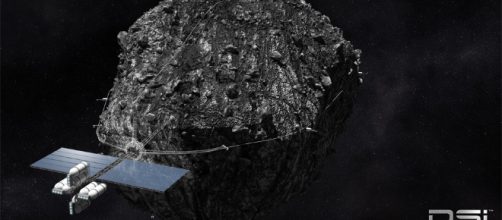One of the problems with asteroid mining is that while some of the big rocks hurtling through the solar system can be worth literally trillions of dollars, some of them are not. The trick is to weed out the asteroids that are comprised of trash rock and locate those that are either packed full of platinum group metals, as well as nickel and iron, and those that are called carbonaceous asteroids, meaning they contain water, a precious commodity for those exploring the high frontier of space.
How astronomers can become prospectors
According to a recent piece in Space.com, a Harvard astrophysicist named Martin Elvis suggested that many asteroids could be characterized within minutes, using large enough telescopes.
The two 6.5 meter Magellan telescopes in Chile, for example, could focus on a faint asteroid and rule it out in a few minutes solely based on its color. 85 percent of the asteroids could thus be eliminated from consideration. The other 15 percent could be visited by small space probes to determine how valuable they would be to mine.
Convincing the asteroid mining companies of astronomy based prospecting
Elvis mentioned that he has already approached the two most important Asteroid Mining companies, Planetary Resources, and Deep Space Industries, about using Earth-based telescopes to prospect for mineral laden asteroids, but both were initially skeptical. The two companies have their own program of asteroid prospecting that involve launching small, space telescopes and then probes to the rocks with the most promise.
Elvis went on to say that one of the companies have come around to the idea but declined to mention with one.
Giving astronomers an incentive to prospect asteroids from afar
Observatories are generally booked in advance for months and even years by researchers who want to do studies on remote objects ranging from nearby moons and planets in the solar system to distant galaxies. Blocking off even a little time to hunt for mineral laden asteroids will be time not available for more scientific studies. Clearly, observatories, whether they are privately owned or run by a national government’s space agency, need a monetary incentive to get into the asteroid prospecting business.
One way to point telescopes at asteroids would be for the asteroid Mining Companies to pay for the service.
The results of such an arrangement will have to be delivered to the commercial enterprise in secret, as the data would be considered proprietary. Of course, the moment that a private company follows up by sending a CubeSat space probe to the target asteroid, the fact that it might be valuable would become public.
The other way to make asteroid prospecting to make it worth an observatory’s while would be to pass a law or, better, from an international agreement that the astronomer – prospector would get a piece of the action, a percentage of the profits for the eventual mining operation. Five percent of trillions of dollars would be an immense sum, enough to make the owner of an observatory rich enough to finance its own space program, a thought worth considering.


